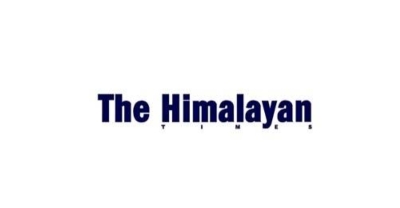EDITORIAL: Postal woes
Like most other sectors the postal services in Nepal should also keep up with the times and their ever-changing demands
The 138 –year government postal service is facing difficult times. This is considered to be one of the oldest government services, and it is evident that it is in dire need of restructuring to survive. Nepal as a member of the Universal Postal Union is obliged to continue its service. The practice of sending letters by post offices is now on the decline by as much as 80 per cent. This is something to mull about. At present, in order to provide relief to the government postal services there are two options mainly to downsize the offices and staff and to create new businesses for it. The government postal services are facing this challenge as much of the business have been taken over by the modern communication technology being used worldwide. The Postal Service Department (PSD) is run under the Ministry of Information and Communication which is provided an annual budget of Rs 3 billion. Ironically, of the total amount of the budget spent 71 per cent is done so by the PSD. Moreover, the amount spent by the PSD also comprises salaries and allowances and perks for its staff alone. PSD has almost 18,000 staffers of whom 6,000 are permanent staff working in 4,405 offices under it. It is not that the government is downsizing its postings, but these days the PSD is being seen as more of a burden.
Although the number of letters sent by post via the postal system has now declined alarmingly by 80 per cent, 20 per cent of this number official letters and letters by foreigners and Nepali clients. The PSD can be given credit for being reliable although it is facing stiff competition from the private sector. Things are still looking up as the demand for parcel service is seeing an encouraging rise. Previously, the letters and parcels could be seen delivering letters and parcel at the door of the people. Now their number has plummeted dramatically. The private sector courier service has been doing relating well at the expense of PSD. It claims that this is because the PSD works under the service motive whereas the private sector has business as its motive giving it a competitive edge.
As such, experts are for a federal model and the slashing of offices and staffs of the PSD that has not been implemented so far and little is being done to set up new local and federal structures provisions to be enshrined in the new constitution. The PSD at present offers seven types of services. These include express mail, post boxes, financial services like money order service, postal saving banks and lately remittance service and parcel service delivery services. Services are also provided by the PSD with 401 IT based tele-centers with email, internet, photocopy, printing, scanning, lamination and computer training, among others. But they have not proved to be effective in dealing with the private sector such as couriers. Meanwhile, the service provided by the post offices for filling up the forms for the electronic diversity visa programme is gaining in popularity over the years. Thus, like most other sectors the postal services in Nepal should also keep up with the times and their ever-changing demands.
Effective move
It is shocking to hear that the traffic police booked as many as 12,848 motorists, mostly motorcyclists, within six days for violating the traffic rules from various parts of the Kathmandu Valley alone. These days the traffic police and plain clothes police personnel have been deployed in major thoroughfares to manage the congested traffic. Plain clothes policemen are assisting the traffic police to nab the traffic violators who often resort to brawls with the traffic police.
The traffic police have been cracking down on the traffic violators which seem to be quite common. But even common traffic violations may cause major accidents leading to serious injuries or fatal death. The Go Pro cameras worn by the traffic police have been very effective to nab the vehicle riders violating the traffic rules. The Go Pro cameras detect the persons violating the rules and the images captured by them are strong evidence to impose a fine. The traffic violators are not only required to pay the fine, but they are also required to take lessons on safe driving provided by the traffic police. The police have said the move has helped manage the traffic during peak hours and control traffic accidents.





